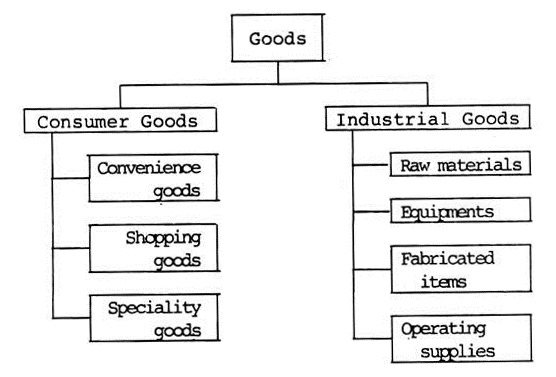Prof. Copeland gives a following classification of ‘Goods’:
1. Consumer Goods:
Consumer goods of different classes are discussed below:
1. Convenience Goods:
ADVERTISEMENTS:
Convenience Goods, usually of semi-durable nature, refer to those comparatively high value items which the customers buy after paying consideration as to quality, price, design, etc. The buying motives of the customers exhibit a high degree of differentiation in the purchase of these items. Examples are; shoes, ready-made garments, cosmetics, etc.
2. Speciality Goods:
Speciality Goods refer to those items which possess unique characteristics and/or brand identification and for which a significant group of buyers are habitually willing to make a special purchasing effort. These are usually of durable nature and high unit value, and the customers’ brand preferences dictate their buying motives. Examples are; T.V., radio, refrigerators, steel furniture, etc.
3. Industrial Goods:
ADVERTISEMENTS:
Industrial Goods refer to those goods which are destined to be sold primarily for use in producing other goods or rendering services as contrasted with the goods destined to be sold primarily to the ultimate consumers.
2. Industrial Goods:
Industrial goods of different classes are discussed below:
1. Raw Materials:
Raw materials may be agricultural items (e.g. cotton) or items of semi-finished nature (e.g. steel) or parts for the finished product to be assembled (e.g. parts of a motor vehicle).
ADVERTISEMENTS:
2. Equipments:
Equipment’s may be basic installations (e.g. boiler, turbines) or accessory products (e.g. calculator, time clocks). These items move directly from the producers to the industrial users.
3. Fabricated Items:
Fabricated items consist of those parts that are used in the assembly of finished goods like automobiles, etc.
ADVERTISEMENTS:
4. Operating Supplies:
Operating supplies such as fuel, coal, etc. neither form a part of nor enter into the product but are necessary for the running of industries.
